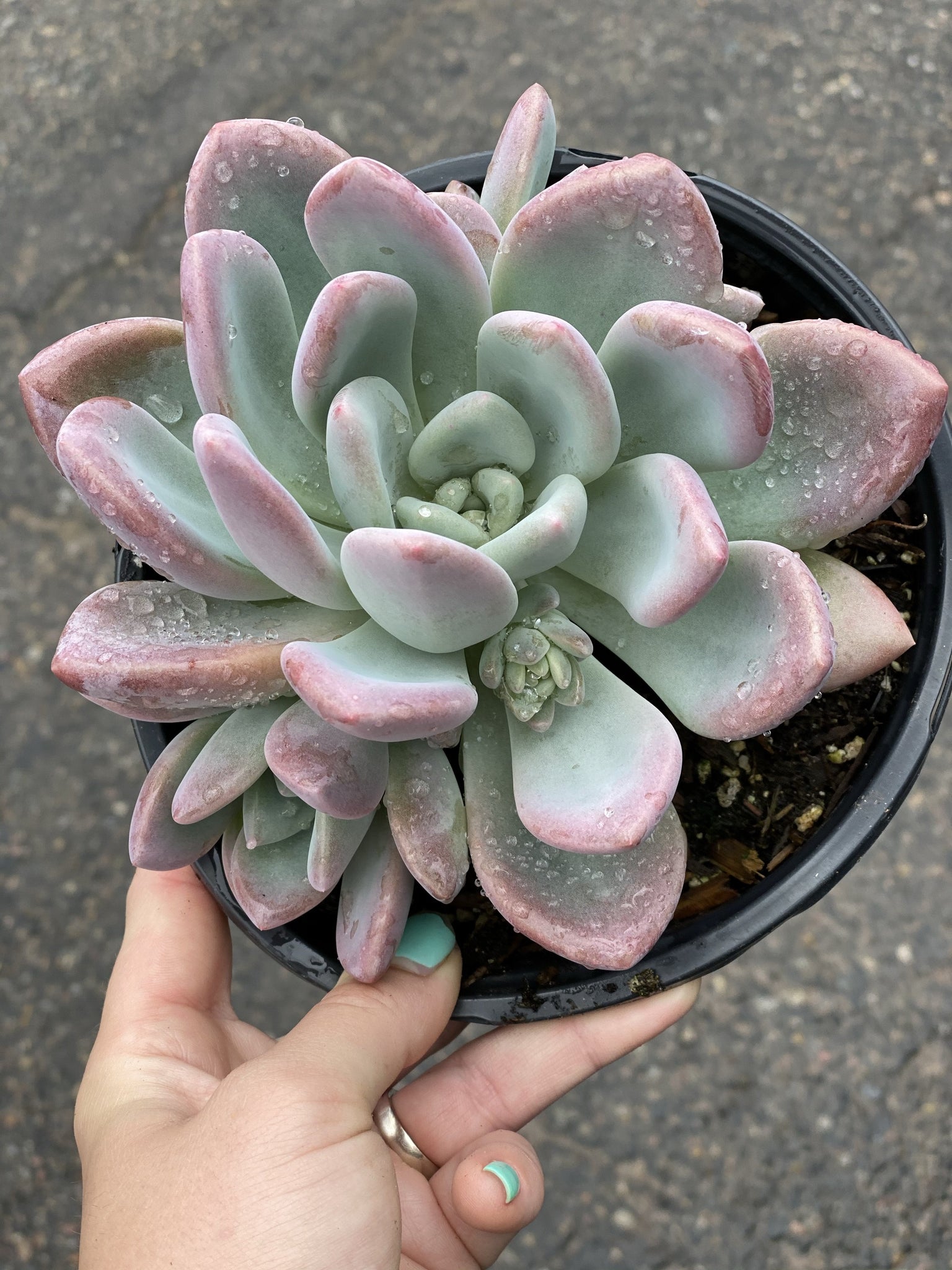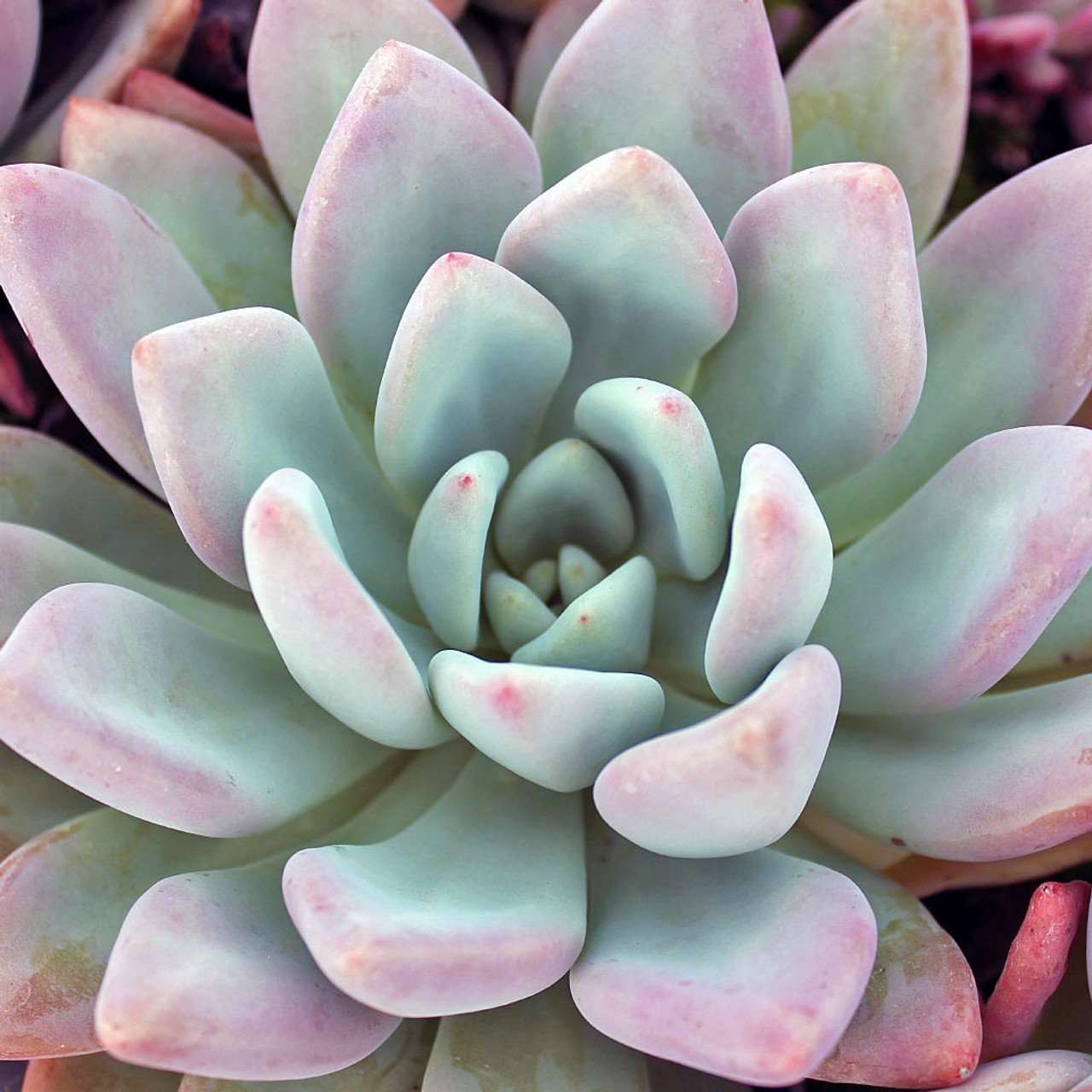This fast-growing succulent is a mix of Echeveria colorata and Graptopetalum amethystinum. It has blue-green foliage and if exposed to the sun, the leaves will take on a pink hue. In the spring, yellow blooms will appear.
Table of Contents
Care and Propagation Information
Graptoveria ‘Opalina’ makes an excellent choice for rock gardens or hanging baskets, as it matures into a low-lying shrub with a wide spread.
Watering
Graptoveria ‘Opalina’ should be watered in the “soak and dry” manner, meaning the soil should be completely dried out between sessions. This is typical of succulents and is the best way to provide the plant with the moisture it needs.
Where to Plant
If you live in an area with temperatures below 20° F (-6.7° C), it is best to grow ‘Opalina’ in a pot that can be taken indoors when the weather gets cold. Although this succulent likes full to partial sun, it can also thrive indoors.
How to Propagate Graptoveria ‘Opalina’
Graptoveria ‘Opalina’ can be propagated with relative ease using either offsets or cuttings.
Offsets
Graptoveria ‘Opalina’ will generate tiny offshoots that will grow around the base of the plant. Gently remove them and let them air dry for one or two days before replanting them.
Cuttings
To propagate ‘Opalina’, use a clean and sharp cutting tool, such as a knife or a pair of scissors, to take a piece of the plant just above a leaf. Let the plant material dry for a couple of days, then put it in soil with good drainage.
Care and Propagation Information
General Care for Graptoveria ‘Opalina’
Watering
Graptoveria ‘Opalina’ should be watered in the “soak and dry” manner, meaning the soil should be completely dried out between sessions. This is typical of succulents and is the best way to provide the plant with the moisture it needs.
Where to Plant
If you live in an area with temperatures below 20° F (-6.7° C), it is best to grow ‘Opalina’ in a pot that can be taken indoors when the weather gets cold. Although this succulent likes full to partial sun, it can also thrive indoors.
How to Propagate Graptoveria ‘Opalina’
Graptoveria ‘Opalina’ can be propagated with relative ease using either offsets or cuttings.
Offsets
Graptoveria ‘Opalina’ will generate tiny offshoots that will grow around the base of the plant. Gently remove them and let them air dry for one or two days before replanting them.
Cuttings
To propagate ‘Opalina’, use a clean and sharp cutting tool, such as a knife or a pair of scissors, to take a piece of the plant just above a leaf. Let the plant material dry for a couple of days, then put it in soil with good drainage.
FAQ
Is Graptoveria opalina rare?
The great news is that Graptoveria opalina is not uncommon and can be easily found in many local nurseries.
What is the most rare haworthia?
Is a graptoveria poisonous?
Although the graptoveria succulent is not poisonous to pets, it is wise to take precautions to ensure that children or animals in the home do not ingest any of its parts.
What is the rarest Haworthia?
Haworthia parksiana, an indigenous succulent native to the South African Western Cape, is the rarest and tiniest of all the Haworthia species. It is suspected to be most closely linked with Haworthia floribunda.
Is Graptoveria opalina poisonous?
One of the most exciting things for any plant lover is that Graptoveria opalina grows quickly and is safe for children and animals. However, as with other succulents, it is susceptible to rot and pests, so it is important to provide proper care.



